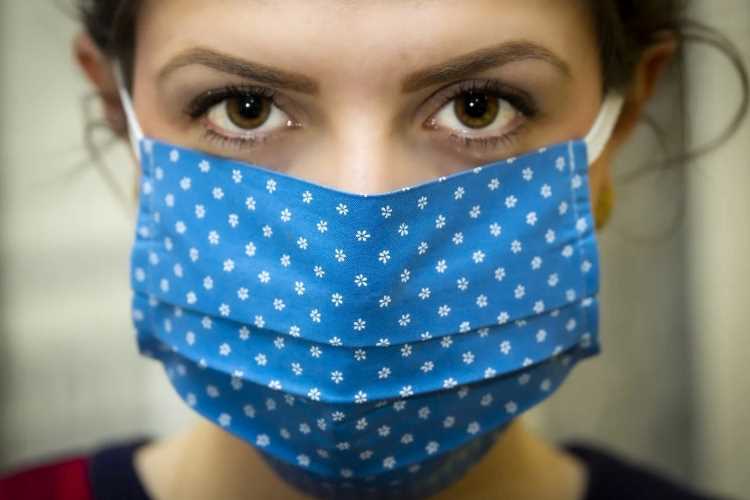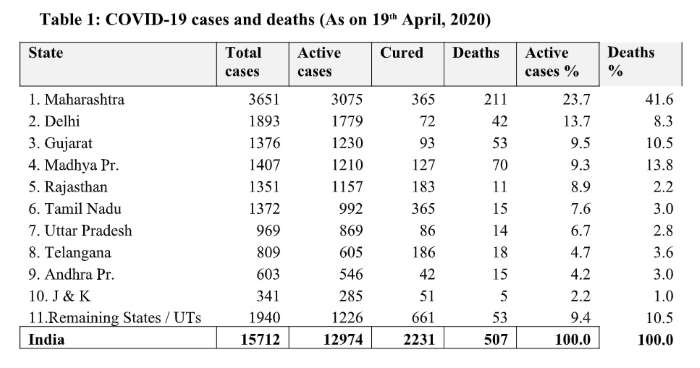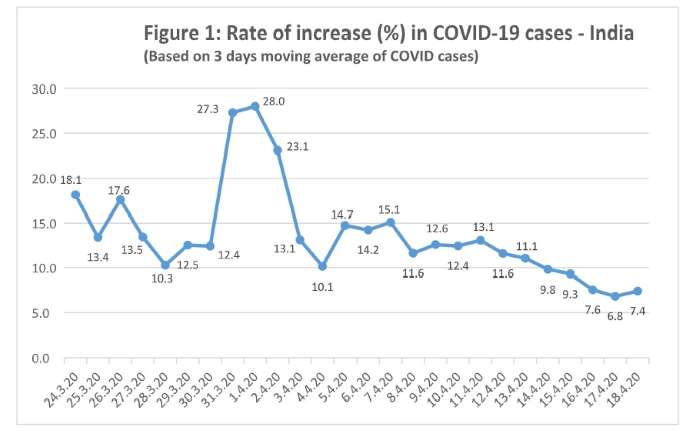
By Rattan Chand
COVID-19 was first reported in China on December 31, 2019 and it has now spread to over 200 countries. As this article is being published, there are 23.3 lakh confirmed COVID-19 cases and 1.61 lakh deaths have occurred worldwide. In India, there are 15,723 active cases and 521 deaths as per latest figures.
COVID-19, or the new coronavirus, was declared a pandemic by WHO on March 11, 2020. In India, clusters and large outbreaks have been reported and unless they are contained in right time, the risk of further spread remains very high. To contain the disease, the Narendra Modi government announced a country-wide lockdown on March 25, 2020 and barring a few exceptions, it is being observed by all. It would be worthwhile to examine whether there has been any impact of the lockdown in containing or slowing down the pandemic?
READ: Make PDS more inclusive, give ration cards pan-India validity
Before we examine this, it would be proper to present the current status of the disease. Out of 36 states and union territories, 32 have reported COVID-19 cases, however, the spread is mostly confined to 10 states. (see chart)

Around 90% of the active cases and deaths are from the 10 states / UTs listed above, whereas 65% of the cases are in five states / UTs. Currently, 408 districts (55%) have reported confirmed COVID-19 cases. More than 35% of the cases are located in eight districts (Mumbai, Ahmedabad, Indore, Pune, Thane, Jaipur, Chennai and Hyderabad).
Of all the reported COVID-19 cases, 82.8% are active, 13.8% are cured and 3.3% have resulted in deaths. Among the closed cases (cured and dead), 81% have recovered and 19% resulted in deaths. Worldwide, the percentage of cured cases and deaths is 79 and 21, respectively.
For this analysis, daily data on number of active COVID-19 cases since March 22 have been used. As the daily data showed too much disturbance, a 3-day moving average is used. Thus, the value against March 24 is the average of the values for March 23-25. It is known that the number of COVID-19 cases have been increasing over time but it is worthwhile to examine whether the rate of increase is showing any trend or not.
READ: Covid-19: How Kerala fought the deadly virus

Figure 1, gives the rate of increase in COVID-19 cases since March 24, 2020. The rate of increase in COVID-19 cases showed no definite trend during the period of March 24 to April 4. — it was declining, increasing and then again declining. However, after April 5 the data show a stable behaviour. Therefore, the data for the period April 5-18 has been used to study the behaviour and for predicting the future trend. This is a purely statistical exercise and it assumes that the rate of change in new COVID-19 cases will follow the same trend as it followed in the past 14 days. This would also mean that all current efforts by the public and authorities will continue to contain the disease in the future as well. However, certain relaxations starting from April 20 may affect this trend.
The rate of increase in COVID-19 cases was 14.7% on April 5, which declined to 7.4% on April 18. The behaviour of the data during this period is well captured by the linear trend (y = -0.6154x + 15.863) with R² = 0.895. Using this equation, we can say that the rate of increase is likely to come down to zero before the end of the lockdown period, i.e., May 3. It is to be noted that, though the rate of increase may fall to zero, the number of active COVID-19 cases will continue to rise till it reaches 18,000 by May 1. However, for achieving the scenario of zero active cases in the country, it may take a couple of months or more, with dedicated efforts.
To conclude, we may say that the lockdown has been effective in reducing the rate of increase of new COVID-19 cases and it is likely that with the ongoing efforts the rate of increase will decline to zero before May 3. Much of the efforts lie in 10 states (Table 1) with 90% of the COVID-19 cases.
There has been a sudden spurt in the number of active COVID-19 cases since April 19. The increase seems to be due to various reasons such as discovery of new hotspots, increased testing, misclassification, and non-reporting due to social stigma. This is likely to disturb the trend and forecast presented in this article. We will update the article after observing the data behaviour in coming days.
(Dr Rattan Chand is a New Delhi-based public health expert. He is a director of EGROW Foundation, a Noida-based think tank)
